The style of these followed that for the postal cancellations, with circular for England and Wales, rectangular for Scottish (except 40A in circle) and diamond shape for Irish.
Numbers were initially issued for station names listed alphabetically, on 30 June 1870, the same month that Porthcurno landed its submarine cable. These had small (16mm) circles.
Stations that subsequently opened were allocated numbers with suffixes to maintain the alphabetical ordering. These generally had larger (22mm) circles.
Stations that closed sometimes had their number reallocated.
In the case of lost or damaged handstamps, replacements were issued, but often in a different size.
Later, about 1886, the requirement to keep things alphabetical appears to have been relaxed.
Dates in the table are given in British format dd/mm/yy.
For those wondering why I describe differences between similar types rather than simply illustrating them,
there is the matter of copyright, in addition to which I am acutely aware of how much time has been spent by others in gathering this information.
In particular, major credit has to be given to Fred W. Taylor, of the Railway Philatelic Group for decades of work on this.
For those wishing for a hard-copy of this with more detail, there is a book in the final stages of preparation.
I will provide details of this as soon as they are available.
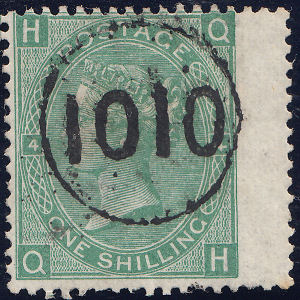 |
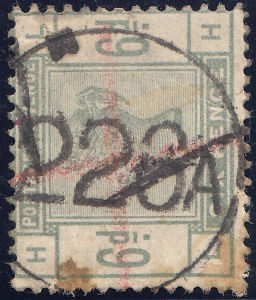 |
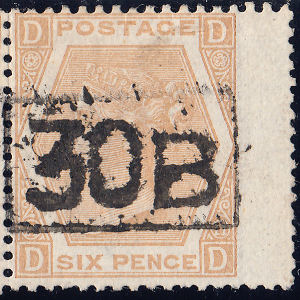 |
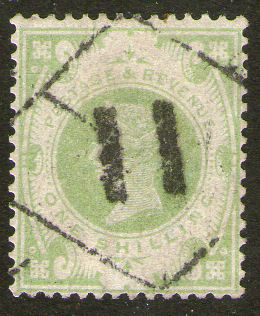 |
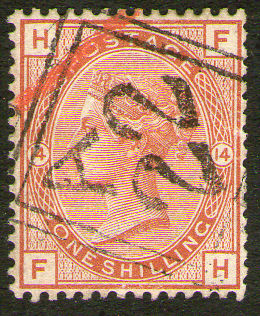 |
| Small 1010, Nottingham | Large 226A, Unknown | Scottish 30B, Bishopton (Renfrew) | Irish 11, Unknown | Irish 22A, Unknown |
In some cases more than one railway company used a station and it may be uncertain which one operated the telegraph office.
In that case, more than one may be listed.
The first English and Welsh handstamps were issued 3 months after the Scottish ones.
There are small oval handstmps (about 13x8 mm) with italic numbers found often on Inland Revenue items. These are almost certainly some kind of inspectors marks.
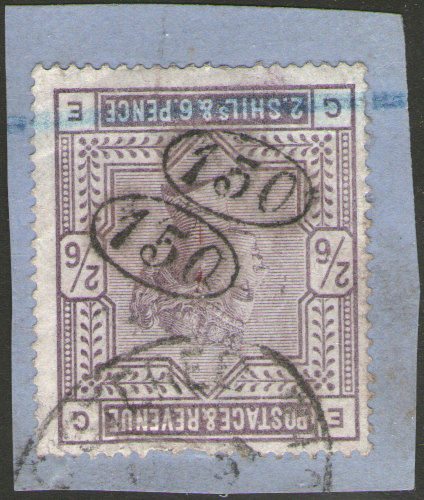 |
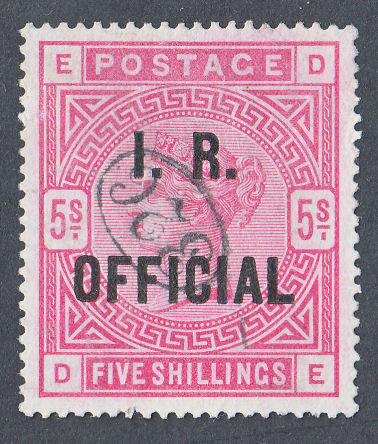 |
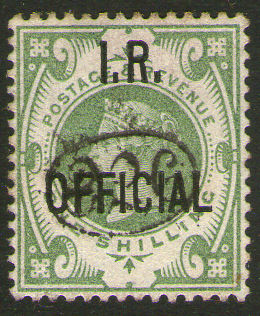 |
There are also circular handstamps that look very similar to the railway telegraphs, but do not match the proof book impressions.
These are presumably also inspectors marks. The numerals are taller and the circles about 17.5mm. There are also some with very small circles.
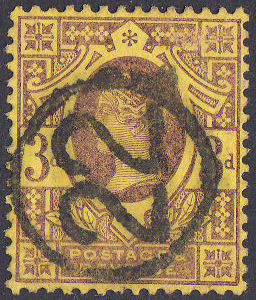
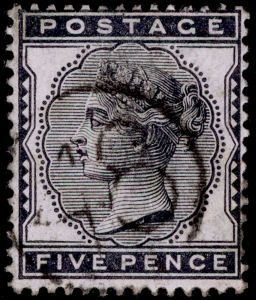
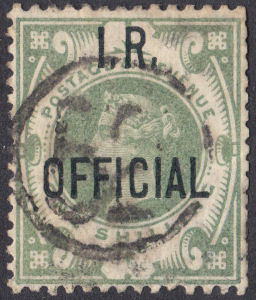
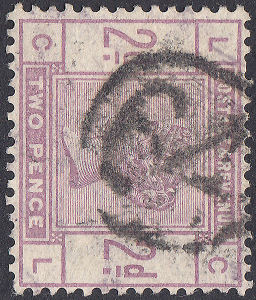
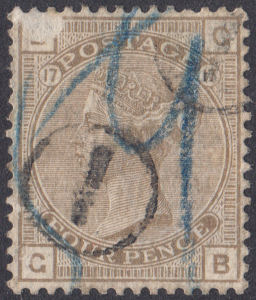
In addition, there are a number of inspectors marks used in continental Europe that sometimes find their way onto GB stamps.
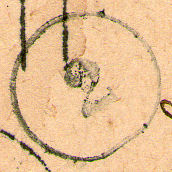
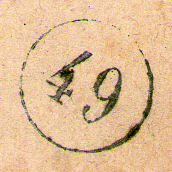
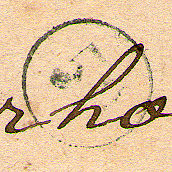

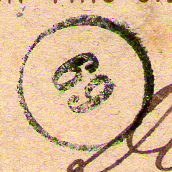
These are Belgian and range in size from about 11mm to a little over 12mm, but I have seen some with 3-digit numbers that might be a little larger.
There were also a range of marks used in London with variously large numbers in diamonds.

When the outer parts are faint, they have sometimes been mistaken for Irish Railway telegraph cancels.
I am told "Some of the entries in the Archive Proof Books are somewhat less than copperplate and some are difficult to decipher."
This has led to many errors and uncertainty. Many corrections have been made, but more are probably needed. Further information is welcome.
Note for researchers: Due to the poor quality of the original material and the volume of transcription, there are some errors.
I have tried to eliminate as many as I can but would like a second opinion on others.
Things I am unsure of can be found by searching in the comments for the keyword 'Check'.
Please advise of any corrections needed.
I am given to understand that these codes are available on microfilm at the British Postal Museum & Archive under
Numerical Date Stamp Impressions Book of Railway Telegraph Stations for United Kingdom 1870 and 1882-1891, reference POST 55/65-66 (reels 54 and 55).
These may not include a lot of the Scottish and Irish items though, for which impressions were not entered in the London proof books.
Search contents
You can mark a row by clicking on it and 'un-mark' it by clicking on it again.
Marking it will display the associated image.
If you click on an image, it will 'store' it on the left-hand side to aid comparison with other images.
Click on the image again to clear it, or on another image to replace it.
For 'Size', 'S' indicates small, about 16mm, and 'L' is the later large size about 23mm.
So far I have only about 10% of the total images needed, so if you have any of the missing ones I would like to hear from you.
Images of Irish types are particularly needed.
If anyone wants to send me a scan (300dpi or 600dpi) of new items,
I will happily update the information.
If you have a lot of items, you can send scans of multiple items. I can easily separate them out.
Useful references:
Post Office Circulars(PDF), Reports opening and closing of Railway Telegraph Stations. For example, the circular 22/4/78 reported that 37 Midland Railway offices had closed.
I have added that information to the list, except that I cannot for Brecon (could be 207, 208 or 209). Several others needed corrections to reconcile.
No.261 had been listed as Buxton (Lamas), Norfolk, Great Eastern, but there was only one "Buxton" and that was on a Midland Railway line.
That made it Buxton, Derbyshire with both Midland and L&NW Railways, so a correction was made. Evesham (508 and 509) were both listed as GWR, but in fact had 2 stations, with one being MR
The two numbers are probably one for each, they were built next to each other. Which was which, is currently unknown.
Finchley Road was not in the listing the numbers. It should have been about 537, for which only 537 Large is listed with no 537 small. I have put the two orphans together.
Disused Stations, Closed Railway Stations in the UK.
History of rail transport in Great Britain 1830–1922
Online interactive historic railway map for British Isles and USA.
Where two or more railway companies use the same station, but it is not known which
of them operated the Telegraph Office, their abbreviations are shown separated by an oblique stroke ('/').
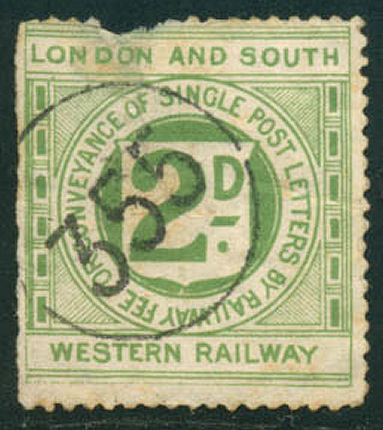
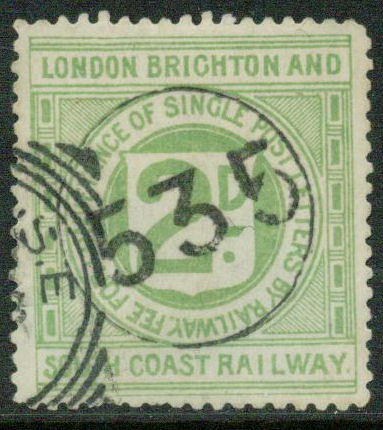
Examples like these are helpful in identifying the company using a particular handstamp.
| If you would like to send a message or picture, but don't have a scanner and/or you don't have email, you can still contact me or use webcam on my Comms. page. |
Three of the English/Welsh numbers, 462, 820 and 857, are for Lloyd's Signal Stations, together with 2 of the Scottish, 147 and 149.
According to Modern-Wireless April 1923, "In 1908 the first Post Office station for commercial
work was opened at Bolt Head for communication with ships,
and in the following year the other coast stations, which belonged to the Marconi Company and Lloyds, were taken over by the Department."
Lundy (857) and Kildonan on the Isle of Arran (149) had no physical railway station, just a submarine connection to the network.
I suspect that others, together with Porthcurno (1097) were handled a similar way. Porthcurno probably connected overland to Penzance.
Last updated 24th. July 2024
©Copyright Steve Panting 2012/13/14/15/16/17/18/19/20/21/22/23/24 except where stated.
Permission is hereby granted to copy material for which the copyright is owned by myself, on condition that any data is not altered and this website is given credit.